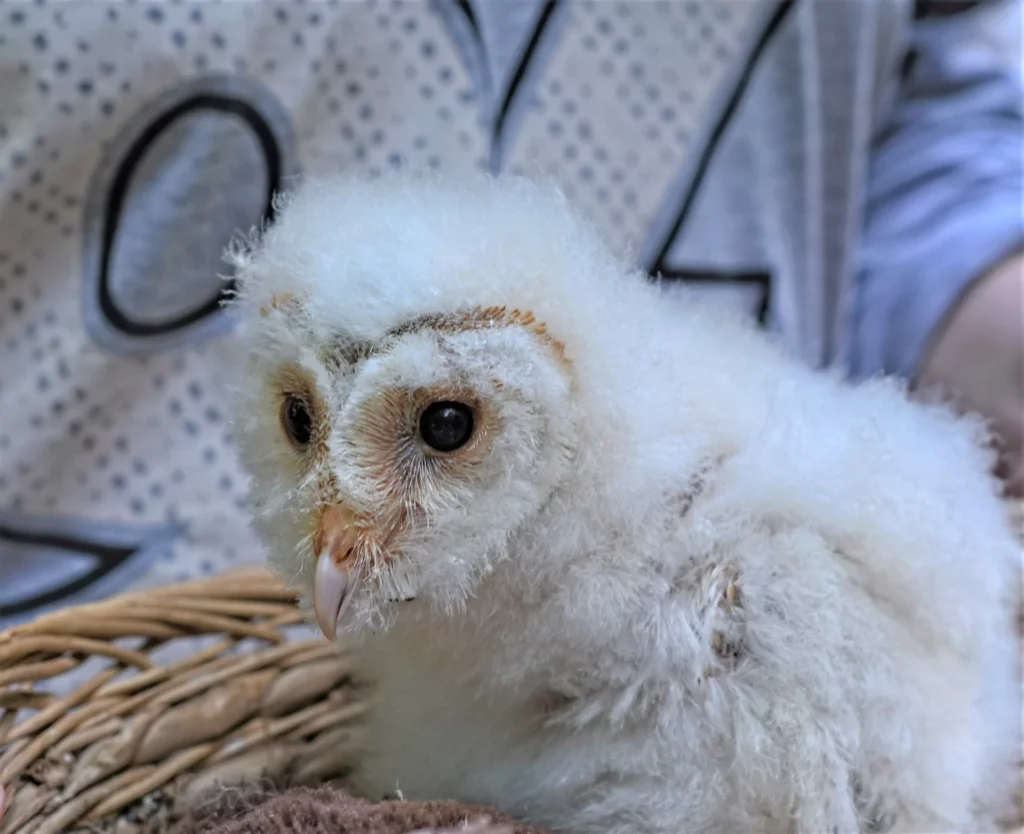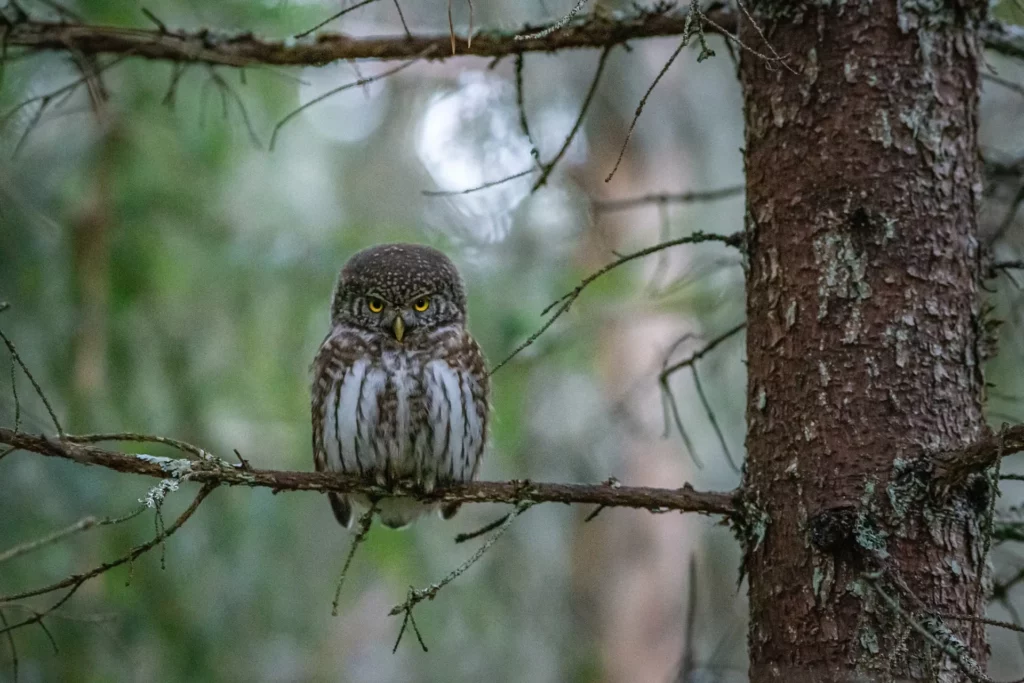Hoot! Hoot! Whenever you hear this, you know it’s an owl!
Owls are unique, elusive, and nocturnal birds, making them a fascinating species. Unfortunately, due to many anthropogenic activities, many owl species have become extinct.
According to the International Ornithological Committee (IOC), there are a total of 255 owl species in the world. Among these are the 20 species of adorable heart-shaped face owls under the Tytonidae family, also known as barn owls.
The other 235 species fall under the typical or true owl family (Strigidae). However, the Red List of Threatened Species by the IUCN already considers four species extinct and listed six others as critically endangered.
So, let’s discover the eleven rarest owls while they are still out there!
11 of the Rarest Owls Species that Still Exist in the World
Owls are some of the most magnificent creatures in the world! Did you know they can rotate their heads about 270 degrees? Exciting, right? In this way, they can keep an eye on their predator and prey.
Moreover, even though there are 255 species, all owls are predatory and are masters in hunting fish, rodents, frogs, etc. If you want to know more about the rarest ones, we got all the information.
1. Karthala Scops Owl
Karthala Scops Owl, also known as the Comoro Scops Owl, is a beautiful small bird inhabiting Mount Karthala on the Island of Grande Comore. They mature to about 7.9 inches in size and mainly live on small invertebrates.
Interestingly, Karthala Scops Owls have two beautiful color morphs: dark and light. The light color variety is known to have grayish-brown feathers on the upper part and a bit of reddish feathers too, along with patterning on their tail and flight feathers.
On the other hand, scientists don’t actually have much information about the dark morph of the owl because it has never been studied. However, many believe the dark-colored Karthala Scops Owl has a dark chocolate brown color and beautiful yellow, round eyes.
Although the Karthala Scops Owls are beautiful, recently, their population has declined to only 2,300 due to mass deforestation for livestock and crop farming and urban constructions.
2. Blakiston’s Fish Owl
Let us introduce you to the world’s largest owl species, Blakiston’s Fish Owl or Blakiston’s Eagle Owl. This magnificent bird can be found in the Far East of Russia, Japan, and China.
Blakiston’s Fish Owls grow about 24 inches to 28 inches tall as adults and can weigh anywhere between 3 kg to 4.6 kg (6.6 lbs to 10.1 lbs). The females are also much larger than their male counterparts.
Moreover, Blakiston’s Fish Owl has fascinating facial and body color variations. You will notice thin black stripes on their brownish-orange face, and they have beautiful yellow eyes and some white eyebrows.
Apart from their facial disk, their upper body also has black stripes but on darker brown-colored feathers, and their lower part has lighter brown feathers with dark and light brown waves and lines. Absolutely amazing!
Did you know a forest with a high population of the Blakiston’s Fish Owl is considered healthy? They have quite a rich taste when it comes to food. They usually hunt aquatic animals, like catfish, salmons, trout, and pikes. But they opt for cats, rabbits, foxes, and even small dogs in winter.
However, the sad part is this owl species is highly endangered. Their population keeps declining yearly due to deforestation, urban construction, car accidents, hunting, lead poisoning, etc. Their population decline is also causing them to inbreed and spreading diseases.
Currently, there are only 1,500 to 4,000 individuals of the Blakiston’s Fish Owl worldwide, according to the IUCN Red List. Among them, 3,200 are in Russia, while the remaining are in Japan.
3. Sula Barn Owl

Sula Barn Owls are found on Sula Island in Maluku, Indonesia. This owl species has an adorable heart-shaped facial disk which is a pale reddish brown color, and the inner part towards their beak gets darker. But the most eye-catching feature is their brown with three dark stripes tail.
Sula Barn Owls have a small population of 300 to 900 individuals, but this species is popular among locals.
Previously, their population declined due to an increase in logging and wood harvest, but according to the IUCN Red List, they are now listed as vulnerable instead of endangered. This happened because their population isn’t declining continuously.
4. Long-whiskered Owlet
Long-whiskered Owlets are striking in appearance, and their habitat is in Northern Peru’s Andean Mountains. Scientists first captured this owl species in 1976, but the bird remained unnoticed for three decades after that.
Many people thought the bird went extinct until it was again spotted in 2007 by some scientists. Interesting, right?
Long-whiskered Owlets have beautiful brown-grayish-white feathers all over their body. Their adorably big tawny brown or orangy-amber eyes perfectly fit their facial disk’s color variation.
However, the striking feature is their long whisker-like feathers surrounding their eyes, giving them a lovely eyelash-like look. This owl species also has no ear tufts.
5. The Cloud Forest Pygmy Owl

If you want to see a cute, small owl, the Cloud Forest Pygmy Owl is a good option. These tiny owls habitat the Andes Mountains in North-Western Ecuador and Western Columbia.
Cloud Forest Pygmy Owls only mature to be around 5.7 to 6.3 inches (14.5 to 16 cm) in length and can weigh around only 75.6 grams to 79.3 grams. Also, like any other female owls, this species’ females are 3% larger than the males.
This magnificent owl has a dark brownish body with softer white feathers on its lower half; you can’t miss the whitish spots all over them. They also have five undone white lines on their blackish tails.
However, the Cloud Forest Pygmy Owls’ population is now only 2,500 to 9,999 due to an 85% decline in forests of Western Ecuador. Timber harvesting, livestock farming, and cocoa plantations are the biggest threat to these adorable birds of prey.
6. Serendib Scops Owl
Serendib Scops Owls are an endangered owl species in Southwest Sri Lanka. There are only around 150 to 700 individuals left in the wild.
Did you know it took Sri Lankan scientist Deepal Warakagoda six years just to find and see the Serendib Scops Owl? In 2004, it became an official bird species and was a great discovery, as the last new bird species found in Sri Lanka was in 1868.
Serendib Scops Owls always look like they’re judging you because of their indistinct facial disk. They are primarily reddish-brown in color but have paler shades on their lower part.
7. Moheli Scops Owl
You will find Moheli Scops Owl on the Island of Moheli, Comoro. This is a small owl species that mature to be only 8.7 inches in length.
Moreover, Moheli Scops Owl has two color variations: dark brown and rufous. As you can guess, the dark brown one has deep and dark brown feathers with bold marks, whereas the rufous morph has more reddish-brown feathers with soft streaks and bars.
However, both the morphs have round yellow and greenish eyes, dark black beaks, and small ear tufts. They also like to devour small invertebrates and insects.
Sadly, this tiny bird is endangered, with only 260 individuals remaining in the wild.
8. Pernambuco Pygmy Owl
Pernambuco Pygmy Owls are native to the Pernambuco state of Brazil. They are possibly the rarest birds, which haven’t been seen since 2001 and are critically endangered. Even if they are out in the wild, there’s no more than fifty left!
Their habitat has been lost due to hunting, sugarcane farming, deforestation, etc.
However, if you ever want to find one, they’re quite small, only about 5.1 inches (13cm) in length, and weigh around 1.8 oz (51 grams). They have a mix of whitish and brownish streaks on their face, and the rest is a dark brown color with some white dots.
Moreover, their chest is mainly white but is surrounded by brownish-yellow feathers. And they have tiny white spots all over them, giving them a charming touch.
9. Siau Scops Owl
Another critically endangered small owl species is Siau Scops Owl. They live in north Sulawesi, Indonesia, and only 49 of them may still be surviving in their habitat.
After this dark brown-colored Siau Scops Owl’s specimen was captured in 1866, and Hemann Schlegel, a German scientist, described it in 1873. This is the only holotype of this bird, and recent surveys of 1998 had no success in finding the owl species.
However, many report seeing it, and researchers say these birds can even live in degraded habitats.
10. The Bornean Rajah Scops owl
The most surprising appearance in this list is of the Bornean Rajah Scops Owl. They are native to Borneo Island in Southeast Asia, but they weren’t seen for 125 years, and in 2016, some scientists finally noticed the bird.
The Bornean Rajah Scops Owl was first discovered in 1892, but their population plummeted rapidly, and the appearance of one individual shows that even now, the population number is relatively low.
11. Taliabu Masked Owl
Many people don’t know that Taliabu Masked Owl and Sula Barn Owl are the same owl species. Surprised? Well, a bird can have different names, you know! So, you can check out our information on Sula Barn Owls to know about Taliabu Masked Owls.
Conclusion
Knowing all the fantastic rare owl species that live and are trying to survive in the world was a hoot. Owls are essential to our ecosystem, and their extinction means our ecosystem is slowly dying.
We must work together and find sustainable ways to protect our owl friends. Moreover, conservation efforts are a must to save these beautiful species from the brink of extinction.
One day, with our efforts, we will help more owl species survive, like the Bornean Rajah Scops Owl that made its surprise return!

